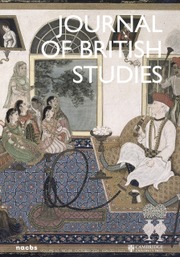This is the first in a new series from Boydell Press that will provide scholarly and accessible surveys concerning medieval occupations and discuss the origins and development of specific trades, including the various craft practices involved and the organizational structure of that industry. The role and place of the clothier is an excellent choice for the first volume, not least because the complexity of the cloth-making process from fleece to finished product in a very wide variety of forms—from Coggeshalls to straits—has given John Lee ample opportunities to delve into the processes involved, the different crafts required, and the regional variation this generated.
Concentrating on English cloth making in the later Middle Ages to the mid-sixteenth century, Lee's introduction assesses the historical conditions that brought about this high point in the industry's fortunes, as well as the technological and organizational developments that led to a growing number of entrepreneurs within the industry. Also valuable is his exploration of the principal primary sources, especially national taxation in the form of lay subsidies, poll taxes, and the ulnage and customs accounts, as well as the expanding availability of probate sources, material culture, and literary texts.
For those especially interested in the practicalities of cloth production, his first chapter is a welcome, detailed account of the various processes involved. For example, he introduces the reader to the different ways cloth was made across the country, including the various types of wool found locally, the range of dyestuffs used and whether cloth making was undertaken using a “proto-factory” system. Moreover, he highlights the growing significance of the clothier as orchestrator of the process, predominantly men who sought to benefit from economies of scale and their control over the various craftsmen and craftswomen involved in the making of the finished cloth.
This brings Lee to the next stage in the process, the marketing of cloth, which similarly underwent considerable changes during this two-hundred-year period. Of special importance is the rise of the London market, particularly in terms of cloth exports at the expense of provincial ports such as Bristol, Hull, and Ipswich, each of which had served significant cloth-producing regions. Looking at London cloth trading in some detail, Lee discusses both official marketing (for example the role of Blackwall Hall) and the identities of buyers and sellers, who often dealt not only in cloth but also traded as grocers, drapers, mercers, and tailors. Yet, as he notes, cloth markets in numerous provincial towns continued to play an important role for many clothiers in their marketing strategies, and, even though difficult to quantify, the unofficial trade was equally if perhaps even more significant, clothiers presumably using inns and similar places to buy and sell their wares.
Nevertheless, as Lee explores in chapter 3, the lucrative nature of the industry attracted royal government attention, in terms of quality control, the role of towns as policing agents and taxation, the latter, in particular, providing the historian with extremely valuable resources. Again, this chapter underlines the significance of regional variation, and the interrelationship between town and country that at times led to tension due to the greater flexibility of rural production compared to the more highly regulated civic environment.
Throughout, Lee introduces his readers to numerous clothiers; however, in the second half of the book this focus becomes increasingly pronounced, first in a chapter on the social and cultural history of clothiers as a group and then another chapter devoted to four case studies of well-known clothiers. This focus leads to some unavoidable repetition. By definition, these famous clothiers are known because of the level of surviving evidence about them and their families, which means they often feature as key examples in Lee's analysis of clothiers’ as a group—houses and workshops, farming and landholding, religious and commemorative practice—and he then assesses them in more detail in his detailed case studies.
Nonetheless, this is more an observation than a criticism and the case studies provide an interesting range of wealthy clothiers, with some families operating in the industry over several generations. Moreover, Lee's investigations raise two intriguing questions that he considers to a degree: How distinctive socially and culturally were clothiers as a group within late medieval English society? How unusual were these four clothier families compared to their contemporaries? These are fascinating points, bringing into the discussion ideas about to what extent such men were early capitalists, and whether such notions are solely applicable to clothiers or can also be seen among other occupational groups, something that is likely to become clearer as other volumes are published in this series.
To add to the usefulness of his book, Lee provides several appendices, including wills from his key families, data by county and place from the ulnage accounts, a gazetteer of surviving buildings linked to clothiers, a glossary, and an extensive bibliography. Thus, this up-to-date survey of clothiers and cloth making is an excellent start to this new series on medieval workers, a very worthwhile project in its own right that will be of particular interest to economic and social historians and students, as well as those interested in regional and local history.


